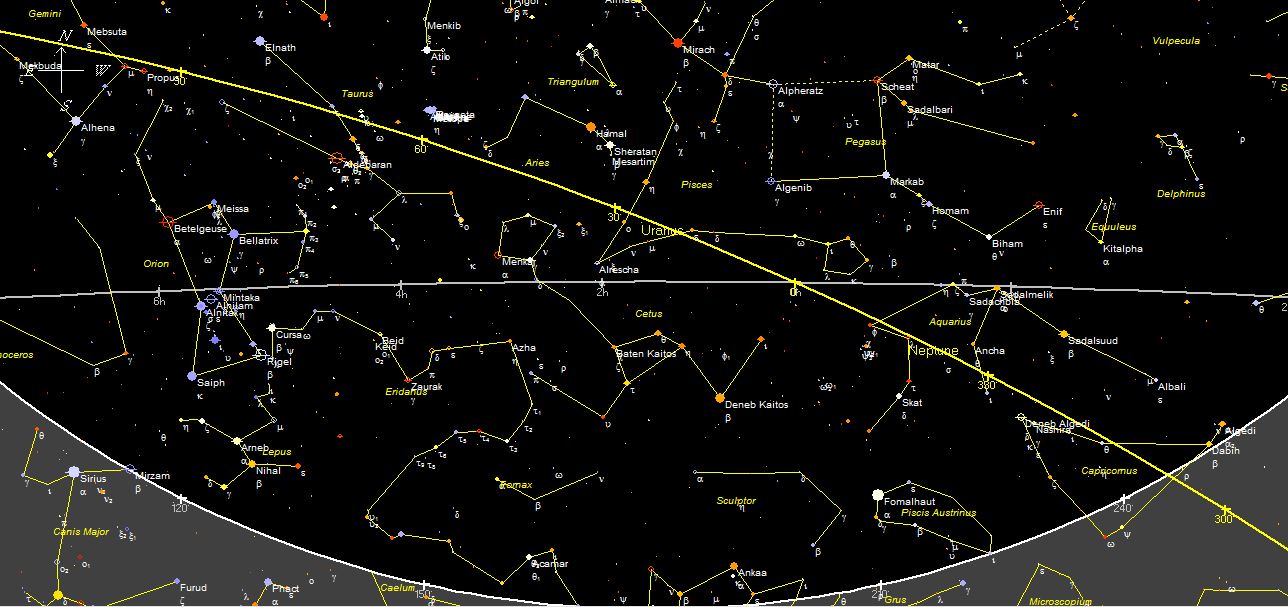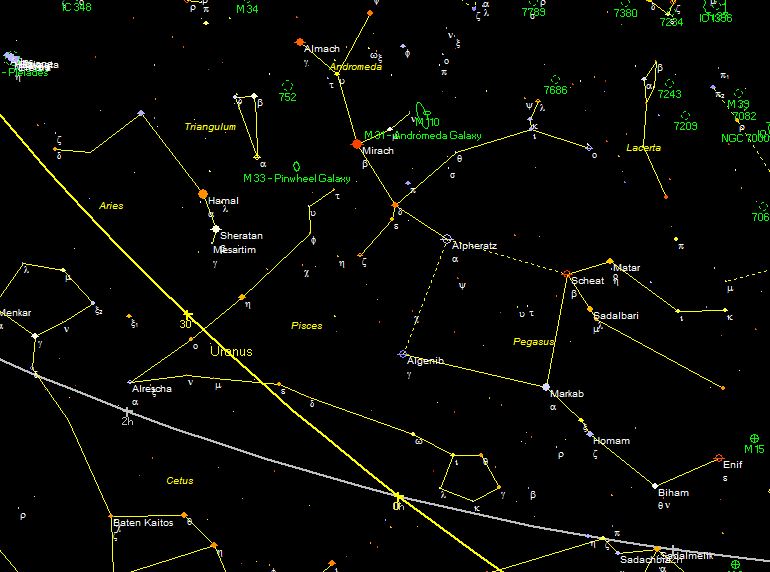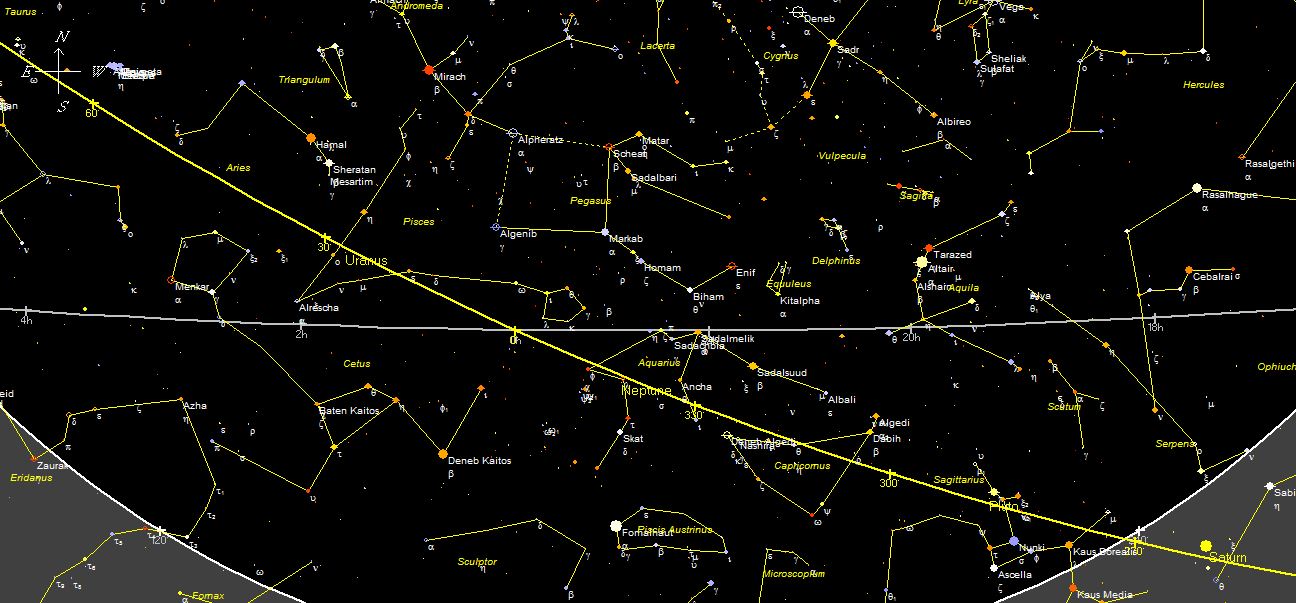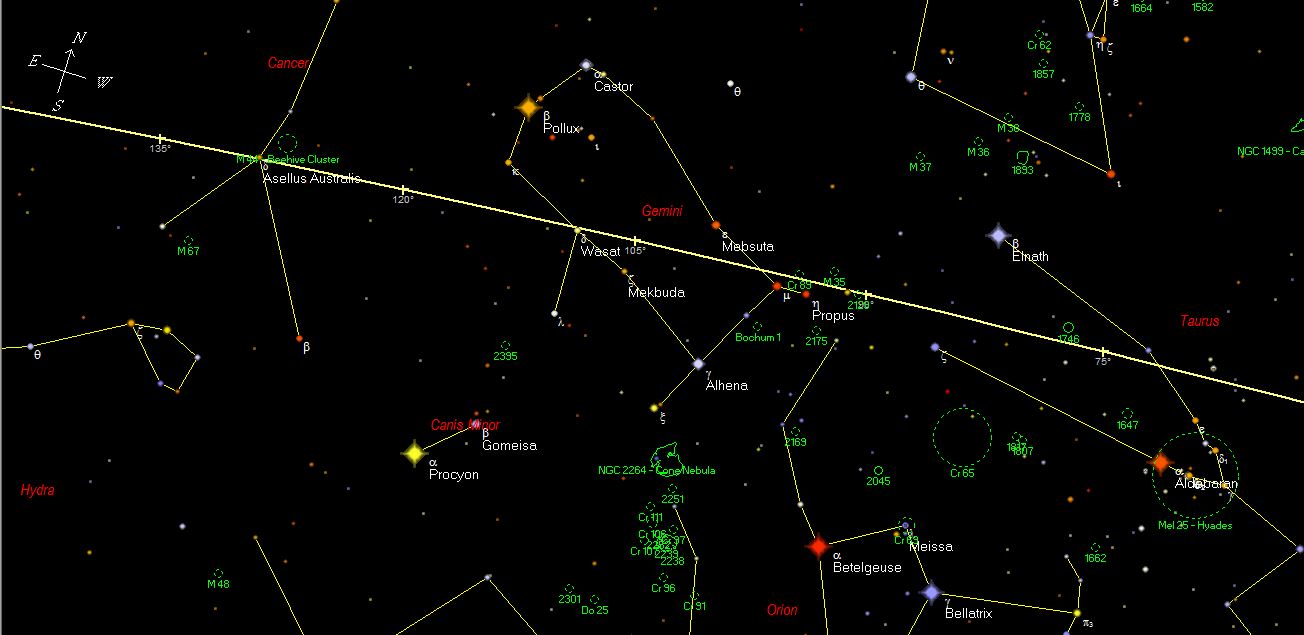
In November the Sun crosses the whole Libra constellation moving eastwards; on the 23rd of the month he enters the Scorpio, from which he leaves the 29th to settle in Ophiuchus, the 13th constellation of the Ecliptic.
In fact, there are 13 Constellations that the Sun crosses in the space of a year, with its apparent motion due to the motion of revolution of the Earth around it, which do not coincide with the 12 of the Zodiac, used by astrologers to fantasize about the influence of the stars on our life.
The winter now at the gates gives us, in the evening sky, the vision of the constellations where the Sun is placed in spring / summer.
Oriented towards South in the evening, we see Capricorn set to the west, followed by the Aquarium; towards the East we find following the constellation of Pisces, Aries, Taurus and Gemini. Orione rises in the East and gives show with its beauty all night long.
The constellation of Pisces has importance not so much for its little luminous stars because for over 2000 years it contains the gamma point or point of Aries, at the intersection of Eclittic and celestial Equator, where the Sun is located at the spring Equinox. Since the Earth is now on the opposite side of the sky we can see it in the evening sky.

The stars form an open V, with the end of the pentagons of stars representing the heads of the two fish tied by the tail with a ribbon tied to the star Al Rischa, alpha, which in Arabic means rope, a pair of white stars at 140 light years that shines like 45 suns.
Near age Piscium, on the border with Aries, there is M74, (see image 2), a beautiful spiral galaxy seen from the front, which is very weak in brightness, mag.9,4, and therefore appears in all its beauty only in long exposure photographs. It is 30 million a.l.
In mythology the constellation of Pisces is identified with Venus and her little son Cupid, who had hidden in the reeds and dived into the Euphrates River in the form of fish to escape the attack of Typhon, the monster with a hundred dragon heads that he launched flames from his eyes.

Above the constellation of Pisces, between the heads, one can observe a large square of stars, the constellation of Pegasus, the winged horse of mythology, born of the blood of the Medusa killed by Perseus.
The 4 stars of the square are stars of mag.2 and 3 and only three belong to Pegaso: Markab, (shoulder), alpha, which shines like 150 suns at 140 al, Scheat (front of the leg), beta, a giant red triple that shines like 330 suns and is 199 al and Algenib (flank), range, which shines like 150 suns and is 333 a.l.
The fourth star at the NE corner is in Andromeda, a constellation with dim stars. It is Alpheratz (head), an alpha that shines like 100 suns at 97 a.l. Starting from this star, there are 3 to the east and you get to Mirach, beta, from here going to NW if you count another 3 to about half between Cassiopeia and Pegasus and you see the great Andromeda galaxy, M31, elliptical and distant 2.2 million of al, the object most distant observable to the naked eye. With a simple pair of binoculars, it is possible to distinguish the two smaller galaxies that accompany it, M32 on the east edge below, close, and M110 west on the farthest.

In mythology Andromeda was the daughter of Cepheus and Cassiopeia, the vanity that was considered more beautiful than the Nereids; these, offenses, complained to Poseidon who sent a monstrous sea snake (represented by Cetus) to devastate the country. The oracle of Zeus said that to ward off this disaster Andromeda herself had to be sacrificed to the monster. It was thus chained to a rock at the foot of a cliff. But when the snake came up to devour it, Perseus attacked him by showing him the head of Medusa and turned it into stone. He then married Andromeda.
__________________________________________________________________
The maps of the sky are taken from Skymap, software downloadable in demo version from the site http://www.skymap.com
Credits
Author: Lucia Corbo. As a Natural Sciences teacher and expert in didactics of Astronomy she has collaborated with various magazines curating articles, columns, and multimedia materials. For the Italian Ministry of Education, she edited the cd “Students show the stars” and with N. Scarpel the book “Astronomy on the net”; she promoted and coordinated the first editions of Astronomy Weeks for schools. She has held multiple refresher courses on the didactics of Science and Astronomy and Astronomy courses for students and adults, both in presence and online.
Translation by Maria Antonietta Sessa




